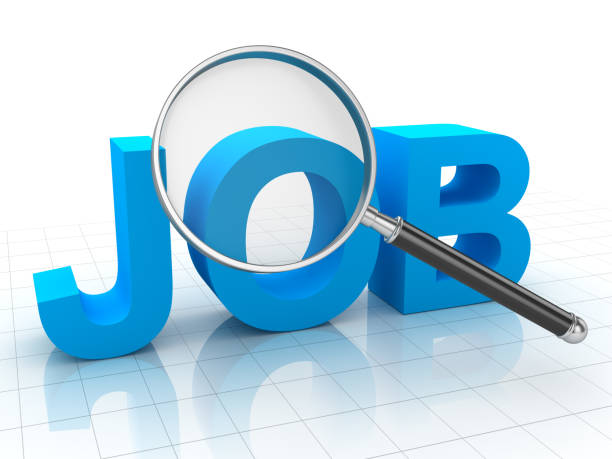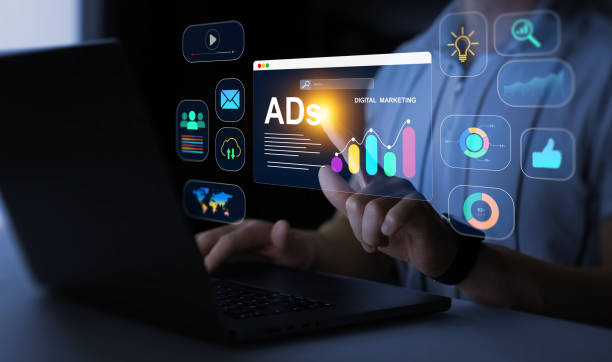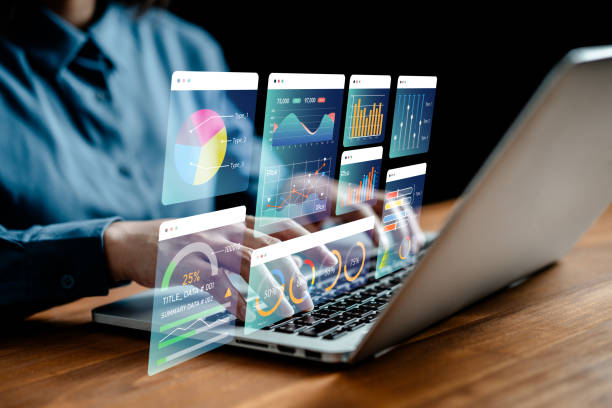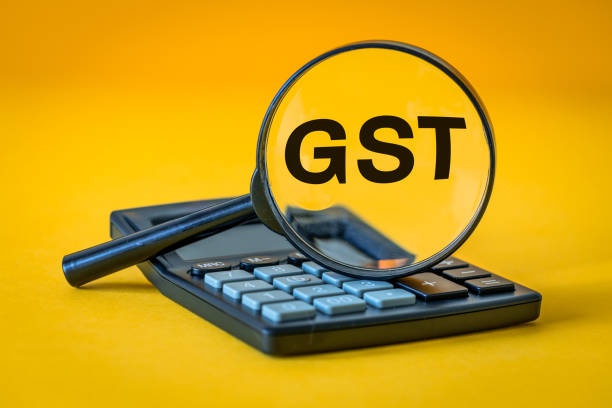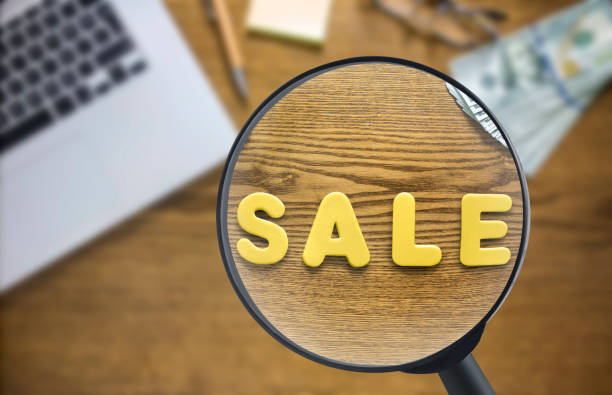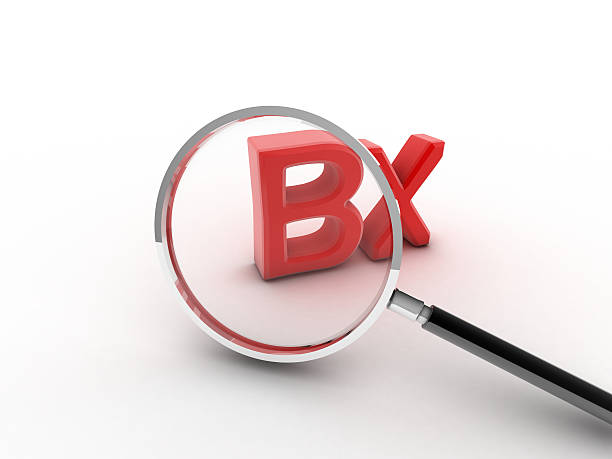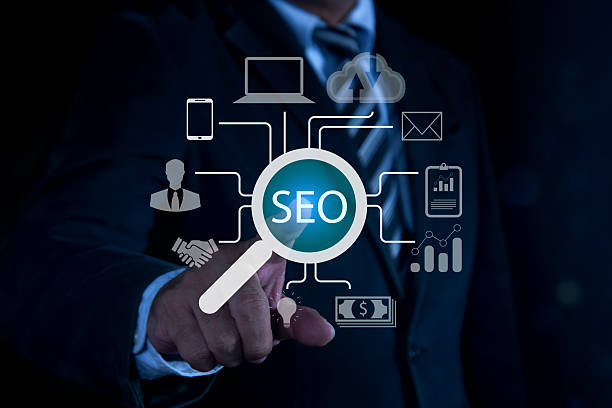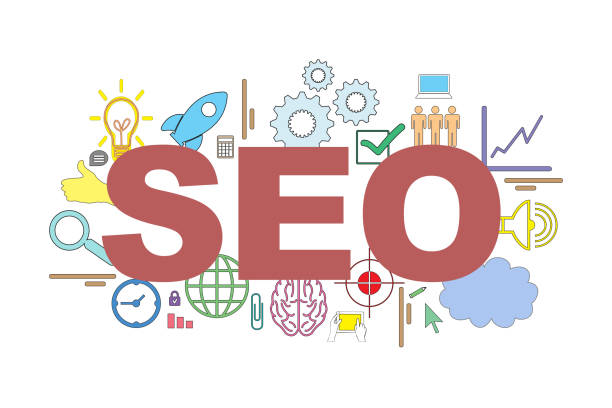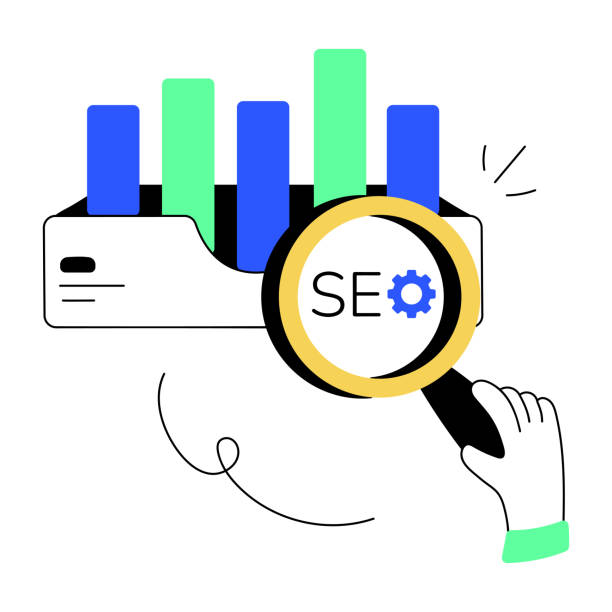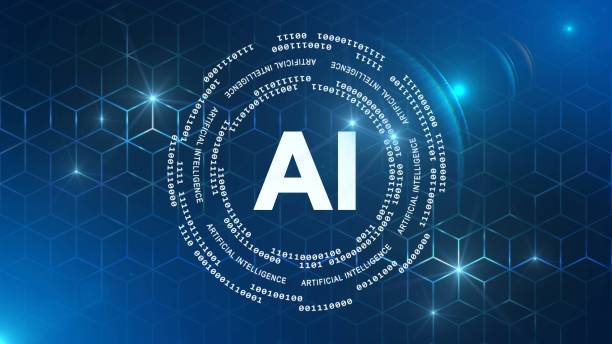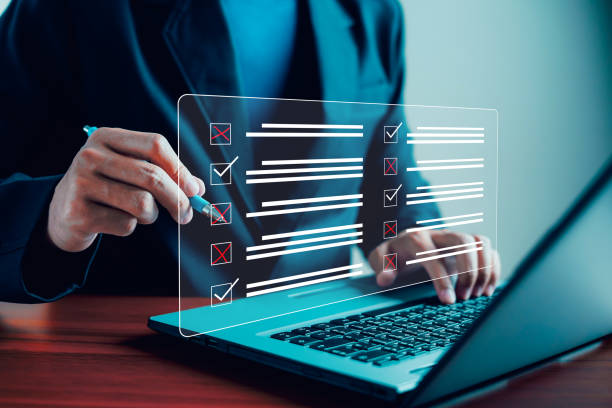What is On-Page SEO and Why Does It Matter?
On-Page SEO refers to the set of actions you take within your website to improve your site’s ranking in search engines like Google and attract more organic traffic.
These actions include optimizing content, site structure, HTML tags, and other internal site elements.
The importance of #On_Page_SEO lies in the fact that it helps search engines better understand your site’s content and show it to relevant users.
In other words, even if your content is excellent, if you don’t have proper On-Page SEO, users may never find it.
A strong On-Page SEO strategy helps improve user experience (UX), reduces bounce rate, and ultimately increases conversion rate.
On-Page SEO is the cornerstone of a comprehensive SEO strategy, and without it, your efforts for Off-Page SEO will not achieve the desired result.
Therefore, investing in On-Page SEO is a necessity for any business that wants to succeed in the online world.
By optimizing the internal factors of your site, you can significantly increase your chances of being seen and attracting your target audience. On-Page SEO is the most important part of SEO.
Are you bothered by losing customers due to the old appearance or slow speed of your online store? The Rasaweb expert team solves these problems with professional online store design!
✅ Increased customer trust and brand credibility
✅ Blazing speed and excellent user experience
Get a free consultation with Rasaweb now ⚡
Keyword Research: The Foundation of On-Page SEO
Keyword Research is the process of identifying and analyzing the words and phrases that users use to search in search engines.
This process helps you understand what your target audience is looking for and how you can optimize your content based on their needs.
Choosing the right keywords is the first step in On-Page SEO and has a direct impact on site ranking and the amount of incoming traffic.
There are various tools available for keyword research, including Ahrefs, Moz Keyword Explorer, and Ubersuggest.
These tools provide useful information such as search volume, competition level, and related keywords.
When choosing keywords, you should pay attention to the balance between search volume and competition level.
Keywords with high search volume may have a lot of competition, while keywords with low search volume may not attract much traffic.
Therefore, you should choose words that have both a good search volume and less competition.
After choosing your keywords, you should use them naturally in your content.
Excessive use of keywords (Keyword Stuffing) can harm your site’s ranking, so you should avoid doing this.
On-Page SEO requires keyword analysis.
Optimizing Titles and Meta Descriptions
Title Tags and Meta Descriptions are the most important HTML elements that appear in search results.
Titles show the main title of the page and should be short, attractive, and relevant to the page’s content.
Meta descriptions provide a summary of the page’s content and should encourage users to click on your link.
Optimizing titles and meta descriptions is very important for On-Page SEO because it helps search engines better understand the page’s content and show it to relevant users.
To optimize titles, you should use your main keywords in the title and keep the title length under 60 characters so that it is fully displayed in the search results.
To optimize meta descriptions, you should provide an attractive and accurate summary of the page’s content and use relevant keywords.
The length of the meta description should be between 150 and 160 characters.
Click here to preview your posts with PRO themes ››
On-Page SEO is meaningless without optimizing titles and meta descriptions.
| Element | Description | Best Practice |
|---|---|---|
| Title Tag | The main title of the page that is displayed in search results. | Be short, attractive, and include the main keyword. Keep its length under 60 characters. |
| Meta Description | A summary of the page’s content that is displayed in search results. | Be attractive, accurate, and include relevant keywords. Keep its length between 150 and 160 characters. |
Content Optimization: The Key to Success in On-Page SEO
Content is King! This famous phrase in the world of SEO clearly shows the importance of content.
Quality content is the main factor in attracting organic traffic and increasing site ranking.
To optimize content for On-Page SEO, you should produce your content based on the needs of your target audience and use relevant keywords naturally in it.
Your content should be valuable, informative, and engaging to encourage users to stay longer on your site and visit other pages as well.
In addition, your content should be unique and original, and you should avoid copying other people’s content.
Search engines penalize duplicate content and lower your site’s ranking.
To improve content readability, use headings and subheadings, short paragraphs, and images and videos.
Also, make sure that your content is grammatically correct and free of any spelling or typing errors.
On-Page SEO is not possible without quality content.
Is your current online store design causing you to lose customers and sales?
Rasaweb is your solution with modern and user-friendly online store designs!
✅ Significant increase in conversion rate and sales
✅ Creating strong branding and gaining customer trust
⚡ Get a free online store design consultation from Rasaweb!
URL Structure: Creating SEO-Friendly URLs
URL Structure is another important factor in On-Page SEO.
URLs should be short, descriptive, and include relevant keywords.
Long and complex URLs are not understandable for search engines and users and may lower your site’s ranking.
To create SEO-Friendly URLs, you should use your main keywords in the URL and avoid using uppercase letters, spaces, and special characters.
Use hyphens (-) instead of spaces.
Also, URLs should have a hierarchical structure and reflect the structure of your site.
For example, the URL of a product page should include the name of the product category and the product name.
For example, instead of using a URL like `example.com/page?id=12345`, use a URL like `example.com/blog/seo-internal-optimization`.
This URL is more understandable for both search engines and users and helps improve your site’s ranking.
On-Page SEO is a structure for URLs.
Image Optimization: Increasing Site Speed and Ranking
Images play an important role in attracting user attention and improving user experience.
However, large and unoptimized images can slow down site loading speed and affect your site’s ranking.
To optimize images for On-Page SEO, you should optimize your images before uploading and use appropriate formats such as JPEG or PNG.
Also, you should reduce the size of images and use image compression.
In addition, you should use the Alt tag to describe the images.
The Alt tag helps search engines understand the content of the images and show it to relevant users.
The Alt tag should be short, descriptive, and include relevant keywords.
For example, if you have an image of a cat, the Alt tag can be like this: `
On-Page SEO needs image optimization.
Click here to preview your posts with PRO themes ››
Internal Linking: Creating a Strong Communication Network
Internal Linking refers to creating links between different pages of your own site.
Internal linking helps search engines better understand the structure of your site and identify the more important pages.
In addition, internal linking helps users easily navigate your site and find relevant content.
For internal linking, you should use relevant keywords as anchor text and link to pages that are relevant to the content of the current page.
For example, if you are writing an article about On-Page SEO, you can link to your other articles about keyword research, title optimization, and content optimization.
Internal linking should be done naturally and logically, and avoid linking to pages that are not related to the content of the current page.
| Factor | Description |
|---|---|
| Anchor Text | Use relevant keywords for the link text. |
| Relevance | Link to pages that are related to the content of the current page. |
| Number of Links | The number of internal links on each page should be reasonable and logical. |
On-Page SEO requires proper link building.
Site Speed Optimization: Better User Experience and Higher Ranking
Site Speed is one of the most important factors in On-Page SEO.
Users expect sites to load quickly, and if your site is slow, users may leave your site and go to other sites.
In addition, Google considers site speed as a ranking factor, and sites that load faster get a better ranking in search results.
To optimize site speed, you should use optimized images, use file compression, use cache, and use quality hosting.
Also, you should use tools like Google PageSpeed Insights to identify your site’s speed issues and fix them.
On-Page SEO is meaningless without adequate speed.
Does your current website create the trust that potential customers should have in your business? If the answer is no, it’s time to have your professional and impactful company website with Rasaweb.
✅ Completely custom design and tailored to your brand identity
✅ Significantly increase lead generation and the credibility of your business in the eyes of customers⚡ Contact us for a free consultation!
Mobile Optimization: Compatibility with Different Devices
Mobile Optimization means making your site compatible with different devices such as mobile phones and tablets.
Today, most users access the Internet through mobile phones, and Google also considers mobile optimization as a ranking factor.
To optimize for mobile, you should use a responsive design that automatically adapts to the user’s device screen size.
Also, you should use readable fonts and large buttons so that users can easily navigate your site.
In addition, you should optimize your site’s loading speed on mobile devices and avoid intrusive ads and pop-ups.
On-Page SEO requires optimization for mobile.
Analysis and Monitoring: Continuous Improvement of On-Page SEO
After taking On-Page SEO measures, you should regularly analyze and monitor your results to understand what works and what needs to be improved.
For this, you can use tools like Google Analytics and Google Search Console.
These tools provide useful information such as the amount of incoming traffic, keyword ranking, bounce rate, and conversion rate.
By analyzing this information, you can identify the strengths and weaknesses of your On-Page SEO strategy and make the necessary changes.
On-Page SEO is an ongoing process and requires continuous analysis and monitoring.
By continuously improving your On-Page SEO, you can improve your site’s ranking in search engines and attract more organic traffic.
On-Page SEO should be checked regularly.
Click here to preview your posts with PRO themes ››
Frequently Asked Questions
| Question | Answer |
|---|---|
| What is On-Page SEO? | On-Page SEO involves optimizing elements that are directly under your control and within your website. Its goal is to help search engines better understand the content of the page and improve its ranking. |
| Why is On-Page SEO important? | On-Page SEO gives search engines clear signals about the content of the page, improves user experience, and increases the chances of attracting organic traffic. |
| What are the most important On-Page SEO factors? | Keywords, Title Tag, Meta Description, URL Structure, Quality Content, Image Optimization, and Internal Links are among the most important factors. |
| What is the role of the Title Tag in On-Page SEO? | The Title Tag is one of the most important signals for search engines and users that specifies the main topic of the page. It should include the main keyword and be attractive. |
| How important is the Meta Description? | The Meta Description does not directly affect the ranking, but it can improve the click-through rate (CTR) by encouraging users to click. |
| How to optimize images for On-Page SEO? | By using a descriptive file name, appropriate Alt Text containing keywords, compression to reduce size, and correct dimensions. |
| What effect do Internal Links have on SEO? | Internal Links help search engines discover and index site pages, distribute authority (PageRank) throughout the site, and improve user navigation. |
| Is page loading speed one of the On-Page SEO factors? | Yes, page loading speed is a vital factor in On-Page SEO and user experience. Slower pages can lead to higher bounce rates and lower rankings. |
| What are the characteristics of quality content for On-Page SEO? | Quality content should be comprehensive, unique, relevant, reliable, readable, and fully address the needs and questions of users. |
| How to use keywords in content? | Keywords should be used naturally in the title, subheadings, first paragraph, body text, and image alt text. Avoid keyword stuffing. |
And other services of Rasa Web advertising agency in the field of advertising
Smart Brand Identity: A new service to increase website traffic through exclusive programming.
Smart Content Strategy: A new service to increase website traffic through intelligent data analysis.
Smart Marketing Automation: A quick and efficient solution to attract customers with a focus on exclusive programming.
Smart Reportage: A new service to increase user engagement through attractive user interface design.
Smart Website Development: An exclusive service for online growth based on accurate target audience.
And more than hundreds of other services in the field of internet advertising, advertising consulting and organizational solutions
Internet Advertising | Advertising Strategy | Advertorial
Resources
On-Page Optimization at Moz
,On-Page SEO: A Complete Ahrefs Guide
,On-Page SEO Guide in Search Engine Journal
,Yoast Ultimate SEO Tutorial
? To turn your ideas into digital reality and reach more customers, Rasaweb Afarin Digital Marketing Agency is by your side with expertise in user-friendly website design and SEO.
📍 Tehran, Mirdamad Street, next to the Central Bank, South Kazeroun Alley, Ramin Alley No. 6


